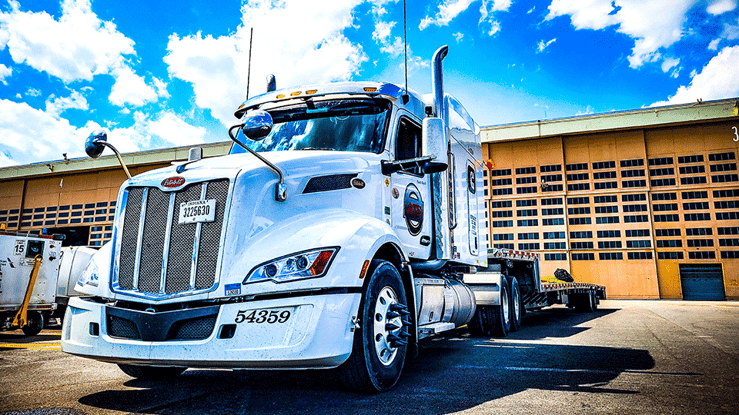
The four weeks of June are always among the trucking industry’s most strenuous.
From the first wave of summer produce season in Georgia to the transport of farming equipment and construction machinery around the nation, you'd be hard-pressed to find an unused trailer throughout June. (In fact, many are overbooked!)
In addition to the demand increase that comes with the thawing of frost laws and the start of construction and produce seasons, June is also bookended by national holidays that send drivers home to their readily awaiting family and friends.
So, suffice it to say truck capacity will be tight again as we enter June in 2024!
Here at Anderson Trucking Service (ATS), we also feel the impact of June in this industry - we typically see a 15 percent uptick in volume compared to May. We’ve found that in this industry, knowledge is power: The more you know about what to expect this month, the better prepared you’ll be to succeed.
In this article, we’ll tell you about the factors that’ll impact your ability to find capacity in June, including:
- How dry van and reefer capacity is impacted in June
- How open-deck capacities are impacted in June
- How national events impact capacity in June
All three of these factors, when working in tandem, impact the pricing and capacity available in the trucking industry.
How Are Dry Van And Reefer Capacities Impacted In June?
When it comes to your ability to find dry van and reefer capacity during the 30 days of June, there are two main constraints that you’ll want to keep in mind:
- Produce Harvest in the Southern United States
- Household Goods Season Nationwide
Each of these events plays a role in tightening dry van and reefer capacities across our nation in June.
1. Produce Harvest in the Southern United States
June marks the initial wave of produce harvest, and distribution, throughout the southern U.S. in many coastal states.
Including but not limited to:
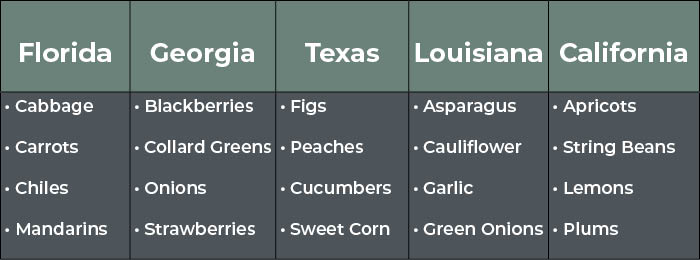
Farmers along this section of our coastline need to move their products from the fields and onto the shelves of grocery stores and produce markets across the nation.
This influx of demand makes the month of June in states spanning the south to south-eastern portions of our nation, an absolute hotbed for reefer and dry van capacities.
The transportation of high-liability, perishable freight fetches a pretty penny for the truckers fortunate enough to be located in these regions.
As such, finding a trucking solution out of these areas will cost more in June as carriers are highly motivated to stick around these locations.
Truckers enjoy the payday they receive from moving the flowing droves of time-sensitive commodities in this area.
And, steering them away from the depths of the sunshine state, and her neighbors is always pricey in June.
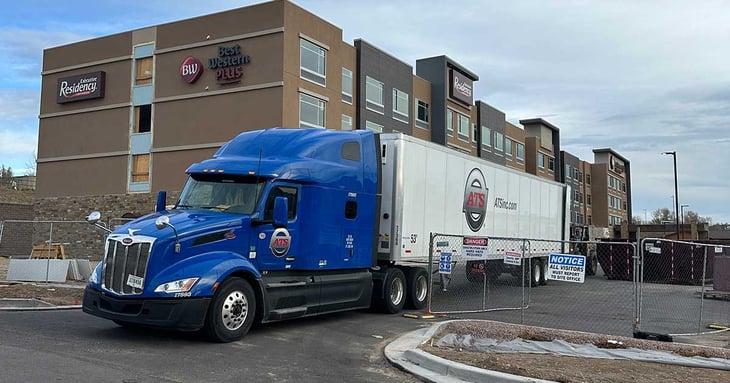
On the flip side, if you’re a shipper looking to move reefer or dry van freight into these areas, finding the capacity to do so will likely come easily.
Drivers love to maximize their time and if your freight will help them get to the cornucopia of harvest-based demand in these regions, name your price, you’ll find plenty of takers.
2. Household Goods Season Nationwide
For an eight-week window of time beginning in June, the movement of household goods across the United States ramps up substantially.
This time of year marks the end of the school year and the beginning of summer, making it the perfect time for families who are looking for a change of scenery, to find one.
And thus begins, household goods season.
As individuals, couples and families uproot their lives and move to a nearby town, state or faraway place, the moving companies — tasked with helping them do so — need to find dry van capacity.
These companies begin their work by reaching out to their carrier partners to find the capacity they need to move their client’s furniture, appliances and other household items.
June, more than any other time of year, is the month where this process is at its peak, people are moving and . . . they’re taking a lot with them.
In turn, this uptick in dry van demand tightens transportation capacity around the nation as people relocate during June. This makes it harder to find a truck at the price points of other months.
How Are Open-Deck Capacities Impacted in June?
The hustle and bustle of America’s highways, prompted by good weather and the promise of a long fruitful summer is thanks, in no small part, to the frequent transportation of open-deck freight.
In the northern U.S., the snow has gone away, the trees are dense with their newfound leaves and the children are gearing up for what promises to be a long, hot summer.
This also means that the frost laws — which dictate gross weight limits on interstate highways in this region — no longer apply.
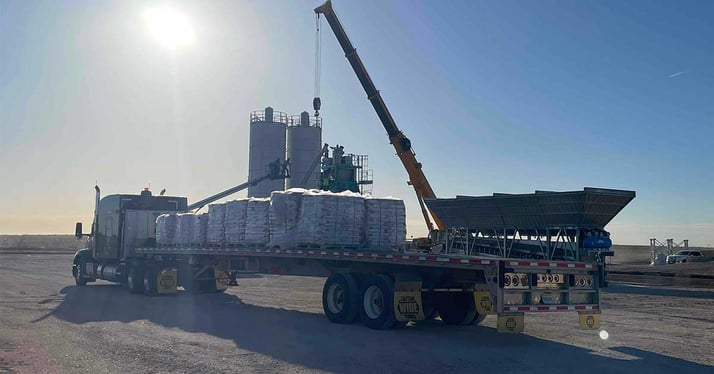
As such, the large, heavy construction equipment that couldn’t be transported in previous months can finally move across our nation's interstates in June.
Expect larger freight like farm equipment, construction equipment and other oversized machinery to soak up a large portion of open-deck capacities as the seasons change in this region.
The southern U.S. also transitions into an open-deck hotbed in June. With a lot of similarities to the northern states, the southern portion of our nation also transports a large quantity of open-deck freight as we steadily approach the solstice.
How Do National Events Impact Capacity in June?
June - unlike any other month of the calendar year - is both capped by national holidays and features the end of a quarter. Each of these events impacts capacity in separate, but equally disruptive, ways.
How do National Holidays Impact Capacity?
From Memorial Day weekend in May to the fourth of July the following month, national holidays should be noted and planned for.
Just like you and I, truck drivers also like to spend holiday breaks at home with their family and friends. As such, the demand for their services especially following Memorial Day — will spill into June.
This increased demand for capacity — in anticipation of the congestion of the 4th of July and avoidance of Memorial Day — will increase prices as demand shifts into the weeks of June.
As such, you’ll want to make sure that you plan for these national holidays, and wherever possible, schedule your shipments around these periods.
How Does The End of Quarter Two Impact Capacity?
As we edge toward the end of the second quarter, halfway through the calendar year, businesses across the U.S. will be distributing their inventories and fulfilling their supply chain commitments. This is done in anticipation of quarterly reporting and analysis as these businesses strategize for the upcoming quarter.
These companies will increase their demand for capacity as they move commodities in anticipation of quarter end, tightening the market even further.
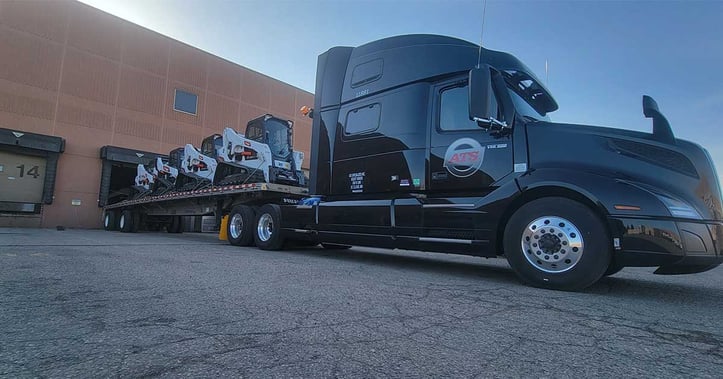
How Should You Prepare For June in the Trucking Industry?
Even though June is an incredibly busy time in the trucking industry, your budget is still important and we’re here to help you through it.
The most important thing that you can do to maximize your budget this June is to provide your transportation partner an adequate amount of lead time.
Although it varies by equipment type, region and commodity, a good time frame for notice falls between 48 and 72 hours before the time your shipment needs to load.
Given this amount of lead time, a great transportation partner will be able to secure your truck at a reasonable price and get it to your facility when and where you need it.
Another great way to make sure that you make the most of your budget this June is to ask your provider questions about each of the factors we’ve outlined above.
Ask questions like:
- How will the produce harvest in the south-southeast impact my shipment?
- How should I plan for my shipment over the 4th of July?
- Will the movement of household goods nationwide impact my freight?
- How can I maximize my budget this June?
- Can I add flexibility to my pick-up and delivery timeline?
Asking questions like these will help you to find the correct provider and, in turn, make the most of your shipping dollars this June.
Finally, The Freight Carrier Selection Checklist is another great tool to use this month. Make sure the carriers you utilize are the best ones for the job, without exception, by downloading this free tool.
If you would like to find out more about how ATS can help you get your freight moved efficiently and cost-effectively this June, let’s talk about it!



